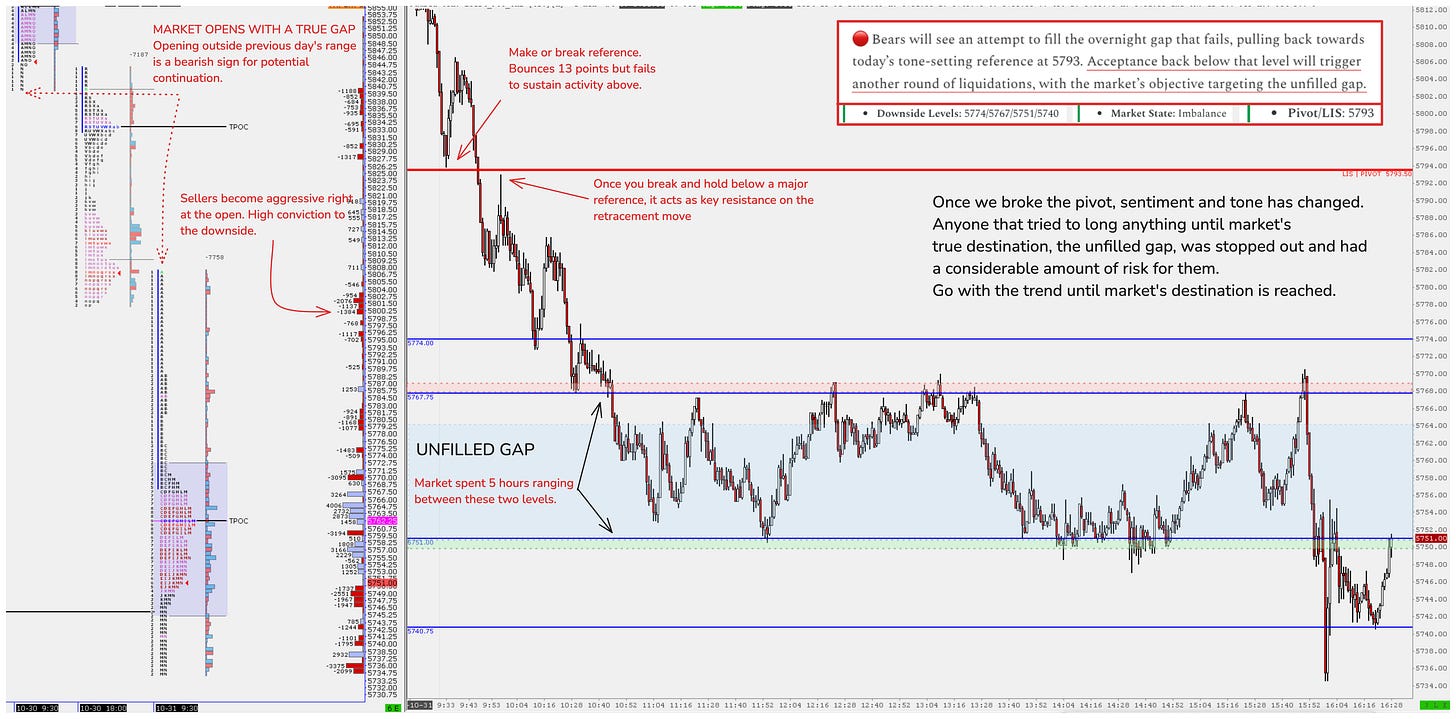The Market Brief
Hey team, the week is closing with a bang, as volatility is expected to carry forward into today’s session.
Let’s recap Thursday’s session and see what’s next!
Impact Snapshot
🟥 ISM Manufacturing PMI - 10:00am
US payrolls increase by just 12,000.
Macro Viewpoint
U.S. stock index futures trimmed gains slightly on Friday following October’s job additions, which fell short of expectations, while the unemployment rate held steady.
The world’s largest bond market rose after a weaker-than-expected jobs report fueled speculation about potential rate cuts from the Federal Reserve.
In October, U.S. hiring grew at the slowest pace since 2020, while the unemployment rate stayed at 4.1% amid disruptions from severe hurricanes and a major strike. Hourly earnings also remained stable.
This report could reinforce the Fed's confidence to consider a rate cut at its next meeting, as its focus shifts from inflation to supporting the job market.
Prior Session Deep Dive
The first step in gaining an edge in the market is understanding change. True Gaps are a form of change; they highlight that supply and demand are no longer equal and that the market is in a state of imbalance, seeking fair value.
Yesterday’s session aligned with our expectations, with the market reaching its true downside destination as highlighted in our bearish scenario. It hit all the downside pivots, filled the gap, and landed at the bottom of the previous multi-day balance range.
The purpose of using a main pivot/LIS is to identify an area crucial for the market to hold; failure to hold this area signals a change in sentiment.
Once we identify this shift in the market, we can anticipate its potential impact and prepare in advance. Our market outlook on Thursday projected this downside follow-up.
When the tone changes and the trend shifts, it is more effective to trade with the trend by shorting rallies and taking profits on breaks, rather than attempting to go long on breaks and profit from rallies, which yields smaller gains and carries higher risk until the destination is reached.
The market broke from the fair value range on the upside, where buyers and sellers had agreed on price, entered an imbalanced state, and made a one-way move toward the fair value range below.
How could we possibly know the market’s true destination hours before it happened? By understanding these precise market dynamics and recognising that markets operate no differently than any other auction.
Most people will never grasp what it means for the market to be in an imbalanced state and will try to stand against a trend without understanding the market’s true destination.
Then, they’ll attribute the drop to a bearish headline, wondering why the market fell “that much.”
Larger moves in the market happen because the stage is already set for them behind the scenes.



